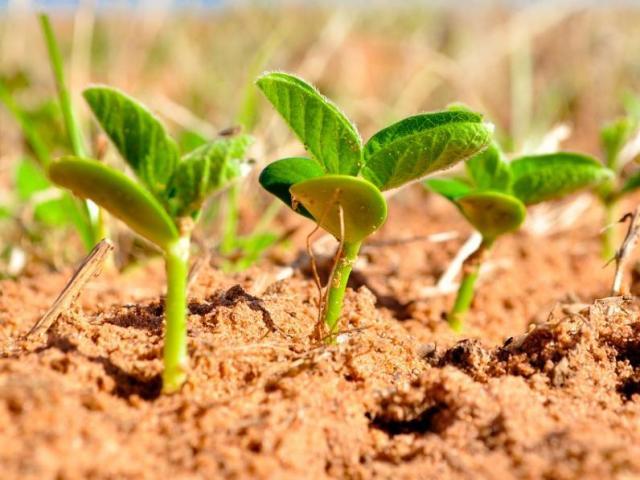A Centre Rooted in Farmers’ Needs: Research to Raise Farm Yields
Agriculture carries the smell of old earth and new hope. For years, productivity at the farm level ebbs and flows with fluctuating weather, pest outbreaks, market rhythms nobody can quite predict. Even so, research institutions play an unexpected card—addressing real farm obstacles instead of simply theorizing in tall towers.
A growing Centre aiming to boost crop yields by focusing on farmers’ actual needs represents more than just another initiative; it’s a crossing between local wisdom and global insight. Think less grand vision statement, more open-ended conversation starting at worn kitchen tables.
Pivots and Small Shifts Outweigh Silver Bullets
Science on paper isn’t bad—it’s often useful background—but shifting priorities toward what farmers name as their biggest constraints changes everything. With research now touching base with what rice planters in Tamil Nadu want solved or how North Dakota wheat growers watch for springtime fungus flare-ups, impact lands more directly.
The USDA Economic Research Service tracks how investment in agricultural science steadily boosts output over decades. When institutions integrate firsthand input from family-run operations rather than sticking stubbornly to commodity crops alone (corn’s long reign is quietly challenged), outcomes resonate beyond yield numbers—the impact trickles into village stability and urban food shelves alike.
Some organizations like the Institute for International Crop Improvement focus deliberately on regionally rooted staples such as millet or cassava—crops overlooked by jet-set trade but fundamental for millions. This approach spins R&D toward issues that multinational markets have left gathering cobwebs: drought resistance where bore wells splutter dry, pest tolerance after rainfall tapers off unpredictably each time the monsoon misses a step.
Digital Twins & Old-Fashioned Gut Instinct
Sometimes progress comes dressed as sensor arrays orbiting above Kansas cornfields. NASA’s “Agricultural Digital Twin” blends remote sensing data with official statistics to help tailor forecasts for individual growers—a detail ordinary advisory services never quite managed before. Running simulations such as drought scenarios or comparing late vs early sowing windows can reduce guesswork about seed choices—these digital tools supplement intuition born from generations tilling uneven plots in unpredictable weather.
Yet all these advances hang together only when researchers pair satellite-driven insights with field visits done at pollination time or during pest emergencies—the combination making sure data meets dirt before recommendations reach farms.
Minor Crops Take Center Stage… Sometimes By Accident
Not every improvement rises from headline investments; sometimes a quiet farmer’s frustration plants a new seed altogether. In one case cited by international agronomy groups, millet—a grain rarely discussed outside niche ag forums—was bumped up supply chain priorities after repeated requests from regional collectives that found better matches between revised cultivars and local soil quirks than imported varieties ever provided. It wasn’t only technical intervention but social listening transforming outcomes here: cropping systems evolved because specialists listened—and learned which answers had been hiding not far under their feet all along.
Research funding bodies increasingly demand public results now too: actionable findings driven into daylight rather than kept behind subscription firewalls or within academic corners where mothballs gather faster than citations pile up. Those who’ve seen one too many top-down reports preferred this shift—a subtle correction reminiscent of cricket fans arguing over batting order strategies no textbook exactly prescribes.
Unexpected Twists & Lingering Questions
Evidence suggests higher yields usually mean saving land elsewhere; yet some studies warn of paradoxical effects known as “backfire”—where increased productivity lures expansion anyway in pursuit of greener profits (a modern echo of Midas regretting his touch). Will improved precision tools help sidestep this pitfall? Unclear for now—it will depend partly on policies weaving through rural districts while city planners draw lines none too straight across maps crowded with competing interests.
Jump-cuts happen often enough when conversations include both regulatory affairs folk fluent in dossier language and smallholders whose expertise runs waist-deep through soil profiles—they don’t always agree whether variety registration paperwork matters quite so much during locust emergencies days before harvest begins properly.
Future Directions Scattering Like Broken Seed Pods
Where does this Centre go next? Investment won’t matter unless practical implementation walks alongside curiosity-driven innovation—not merely following trends but running crosswise when season calls it necessary. Connecting scientists working out genetic markers for blight resistance is great. Training community liaisons who translate best practices into routines adopted between fencing repairs means just as much sometimes—even more if knowledge transfer survives changing governments or technology cycles destined to fade after initial waves crest.
Room remains wide open for minor adjustments that transform outcomes unexpectedly: tweaking fertilizer-to-rainfall ratios based on hyperlocal observations picked up when extension workers stop by unannounced; recalibrating disease monitoring protocols midseason once wind shifts bring threats blown hundreds of kilometres overnight without warning anyone official first.
If previous decades taught anything useful it might be that scientific hubs doubling down purely on breakthrough advances miss subtle progress hidden among day-to-day tweaks described best not using jargon at all—but stories told while sharing midday tea beside tractors cooled off beneath neem trees mid-harvest shift instead.






